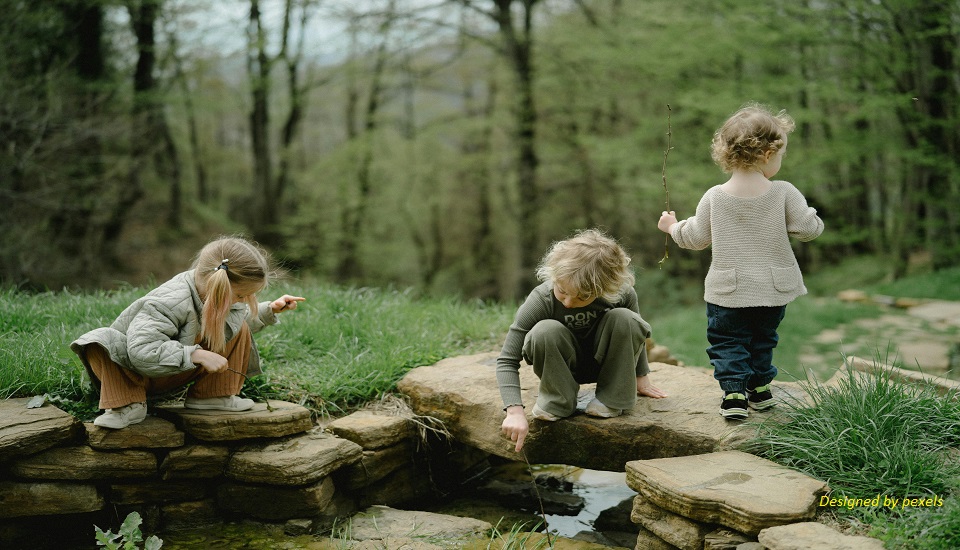Incorporating outdoor education into the classroom is a game-changer for student engagement and growth. Moving beyond traditional classroom settings and integrating the natural world into learning can foster curiosity, enhance well-being, and encourage critical thinking. Whether you’re teaching science or any other subject, outdoor education helps students make real-world connections, and it promotes both academic and social-emotional development.
Let’s dive into how outdoor learning can transform your students' mindsets and enhance their educational experience.
Top 9 Benefits of Outdoor Education
Let’s get to know some of the major benefits of outdoor education for students:
1. Improves Physical Health
Outdoor education encourages physical activity through natural movement, such as running, climbing, or exploring different terrains. This type of active learning helps children develop motor skills, coordination, and endurance, all while having fun in the process.
Those teachers who have pursued courses like Innovative teaching techniques training Mumbai, knows one fact that, unlike traditional classroom settings, outdoor activities provide students with the freedom to move, contributing to a healthier lifestyle.
2. Improving Mental Health
Spending time in nature soothes students, helping to lower their stress levels and ease anxiety. Spending time outdoors gives students a mental break from the often overstimulating classroom environment. The serene, natural surroundings help clear the mind, improve concentration, and enhance cognitive performance, offering a refreshing mental reset.
3. Fostering Social-Emotional Growth
Outdoor learning encourages collaboration and communication. Activities like group games or problem-solving tasks require students to work together, build teamwork skills, and communicate effectively.
Overcoming different challenges in outdoor settings also helps children improve their self-confidence and resilience. These experiences contribute to a positive self-image and help students develop emotional intelligence, empathy, and patience.
4. Bringing the Curriculum to Life
Outdoor education allows students to apply what they’ve learned in the classroom to real-world situations. For example, studying plant biology during a nature walk or measuring angles using branches in geometry makes abstract concepts more tangible. These hands-on experiences make learning more relevant and exciting, sparking curiosity and deeper understanding.
5. Supporting Different Learning Styles
Outdoor activities cater to various learning styles, whether auditory, visual, or kinesthetic. By engaging in activities like direct observation, hands-on experiments, and group discussions, students can absorb information in ways that best suit them. This flexibility helps ensure that all learners can connect with the material, fostering a well-rounded understanding of the topics.
6. Developing Environmental Awareness
When you encourage your students to take part in outdoor education, it helps them to form a deeper connection with nature at the same time. Observing ecosystems, wildlife, and natural processes fosters environmental awareness and respect for the planet. By connecting with nature, students develop a sense of responsibility toward conservation and sustainability, learning how their actions impact the environment.
7. Encouraging Responsibility and Sustainability
Outdoor education also fosters a sense of responsibility within students for the environment. As students engage with nature, they learn about sustainability and the importance of conserving natural resources. This awareness can lead to more eco-conscious behaviors and decisions, ensuring that students grow up with a mindset focused on environmental stewardship.
8. Start with Simple Activities
Teachers new to outdoor education can start with simple, structured activities like nature walks or observational tasks. These activities introduce students to outdoor learning in a manageable way and help build confidence for more complex projects. Gradually, you can introduce additional layers of learning, such as experiments or group projects, as students become more comfortable in the outdoor setting.
9. Maintain Safety and Structure
While you’re introducing outdoor education to your students, safety of their’s should be your top priority. Establish clear rules, maintain a structured schedule, and ensure that students have the necessary tools and resources to engage safely. Teachers should gradually introduce more challenging tasks, ensuring students are prepared and confident in their abilities to take on new challenges.
Final Thoughts
Outdoor education provides a dynamic and enriching learning environment that goes beyond the classroom. By integrating nature into lessons, teachers can enhance both academic performance and social-emotional development. Outdoor activities promote curiosity, foster resilience, and nurture a sense of responsibility towards the environment.
For educators, implementing outdoor education means encouraging students to learn in a fun and meaningful way while making connections that last a lifetime.
By learning relevant outdoor education-related teaching techniques by pursuing courses like an International Diploma in Pre & Primary Teachers Training Course, and with careful planning, safety measures, and a spirit of adventure, outdoor learning can become an essential part of every student’s educational journey.
Written By : Sanjana








